For Alexander McQueen’s Sarah Burton, the creative journey is just as important as the end result. It is vital for her to document everything, to tell the complete story. The designer’s latest project, Process, shines a spotlight on the work that goes into her collections by inviting 12 artists to interpret the pre-autumn/winter 2022 line in their own languages. It is a physical, tangible and real display of Burton’s belief that creativity comes from myriad perspectives.
“Seeing another creative process is inspiring,” Burton tells Vogue of handing the mic to sculptors, photographers, painters and ceramicists, and giving them complete creative freedom to rewrite her team’s work their way. “Art has inspired people for generations, because it’s about storytelling and a reflection of the times that we live in. These have always been key narratives of the house.”

Although Burton has worked with some of the artists, such as Marcela Correa, who creates pieces for McQueen stores, and Guinevere Van Seenus, a longtime brand muse, she was taken aback by the uniqueness of the final multi-disciplinary works. “Some arrived and they were very small and precious, real treasures, and others were much larger and powerful in a different way,” she says of the sheer scale of the pieces arriving at McQueen HQ. “Especially after the last years of lockdown, you realise how much more power things have once you see them physically. It’s really the same with clothes when you see them flat or on a screen; they have a completely different feeling when they are seen in person–that’s when things come alive.”

For Burton, a woman who finds inspiration in the everyday, choosing the artwork that resonates most is impossible. The variety of personal, and oftentimes magical, stories relates to all the tales her team tells at McQueen. “Process to me is very much the narrative of how you get from one point to the next – like a collection of ideas that show the mind working.” Here, Burton unpacks what each artist’s ode to McQueen means to her.

1 / 12
Ann Cathrin
“Ann is inspired by landscape and nature and she doesn’t sketch but through her hands has a conversation with thread. She talks about her process as an introverted and personal thing, which is very touching.”

2 / 12
Cristina de Middel
“Cristina’s work and the conversations around domesticity and woman hood were translated so beautifully in the animation, I liked how she used surrealist imagery to break the tradition of perceived domesticity.”
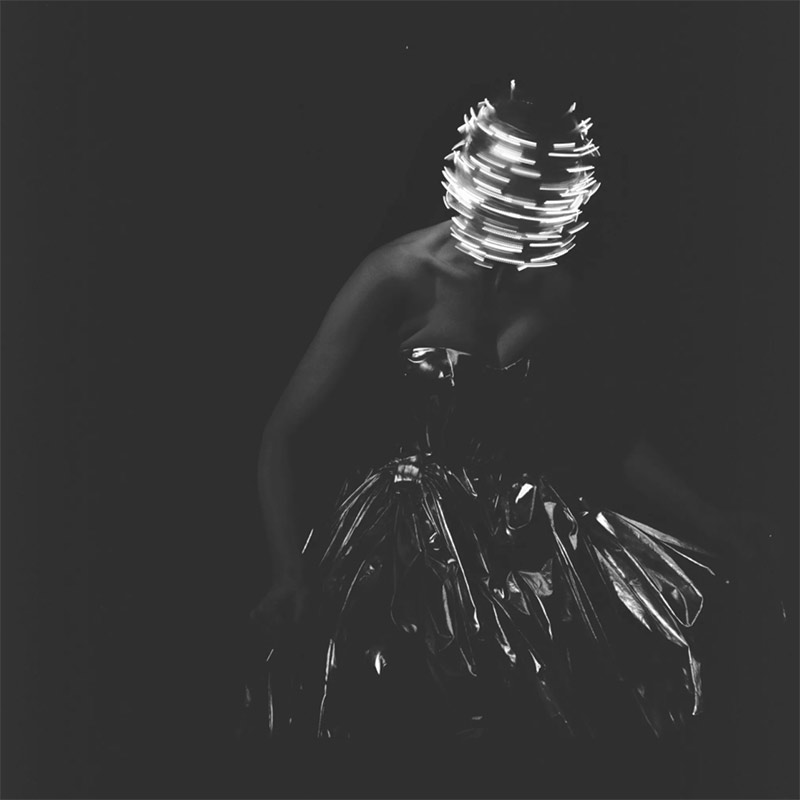
3 / 12
Guinevere Van Seenus
“Guinevere has such a long connection with the house. I loved the way she uses light and darkness which immediately felt very McQueen. She talked about making her own silver dress for her school prom. I was also moved by her familial generational story – her grandmothers passing on their love of embroideries. In her piece, it’s interesting how she plays two roles, photographer and model. I loved how she looked to light for inspiration – light out of darkness – which always resonates with us here.”

4 / 12
Hope Gangloff
“Hope saw the denim dress in an architectural way, but looked at how colours work together, just as we look at colour and silhouette when we’re putting collections together.”

5 / 12
Jennie Jieun Lee
“Jennie discussed how her work is a collaboration with nature, and that nature is bigger than her. She talked about working with natural forces, helping her to produce works of art more incredible than she would be able to do on her own.”
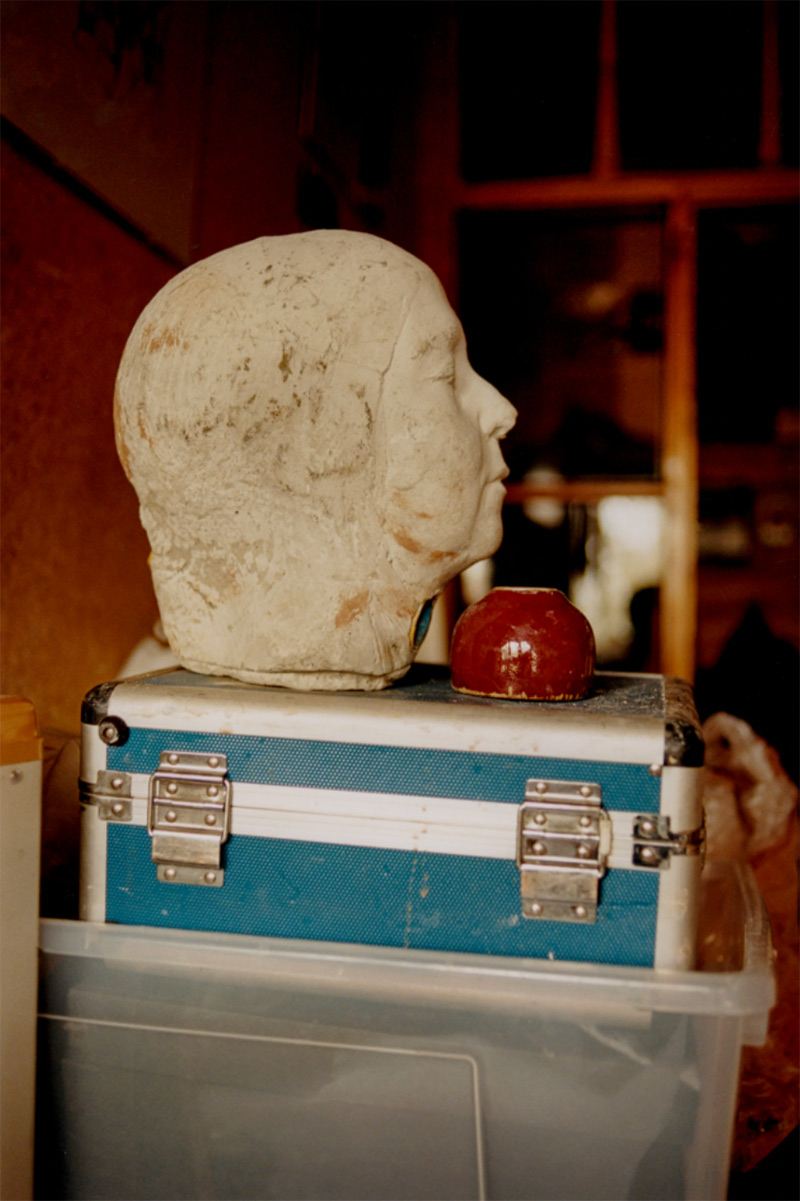
6 / 12
Judas Companion
“With Judas, I was drawn to her idea of metamorphosis, protection and transformation – at first glance nothing is what it seems to be.”

7 / 12
Marcela Correa
“The touching side of Marcela’s work also really stood out to me – the idea of the fragmentation of things and how she missed connecting with people during lockdown, that story of broken connections resonates with so many of us. I liked how this is her first three-dimensional pictorial work, and that she’s excited about the beginning of a new stage in her creativity.”

8 / 12
Marcia Kure
“I was fascinated by how Marcia sees the body as a communication device, translating the idea of mark-making from our embroidered dress and linking the lines in her piece to traditional body painting. She talked about the marks connecting with the dress, and the dress connecting with the body, so the body becomes a book. She created a multi-layered work marrying history to what is happening now, which was very inspiring, interpreting the historical story of Queen Amina and making it relevant today. The other element which really stands out is her ability to bring all these talented communities of people to work together – carpenters and hair weavers – all collaborating to make the pieces with her. I was touched by her understanding that it takes more than one person to tell a story, that’s always been how we work in the studio.”
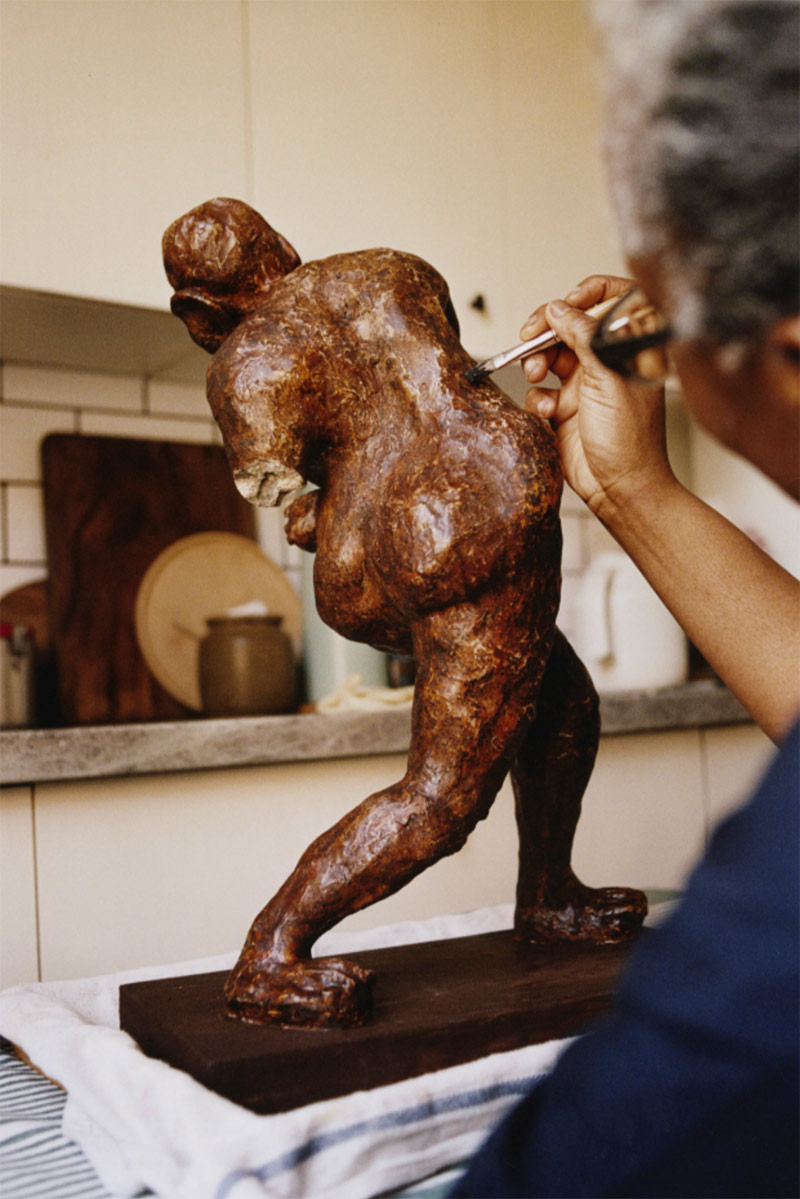
9 / 12
Marcia Michael
“With Marcia, her work interpreted the embroidery of the dress and she talked about the power of breath and roots of nature translated onto the body–she saw the embroidery as representing lungs and breathing. She also used her own body as the mould for the finished piece. She talked about this form being passed down through generations and her process almost being like a ritual–the nature of this character being transferred from mother to daughter, sister to sister and friend to friend.”

10 / 12
Beverly Semmes
“I loved the huge scale of Beverly’s work and how she interpreted our yellow dress through an incredible tableau of fabric. Again, the work felt very personal.”
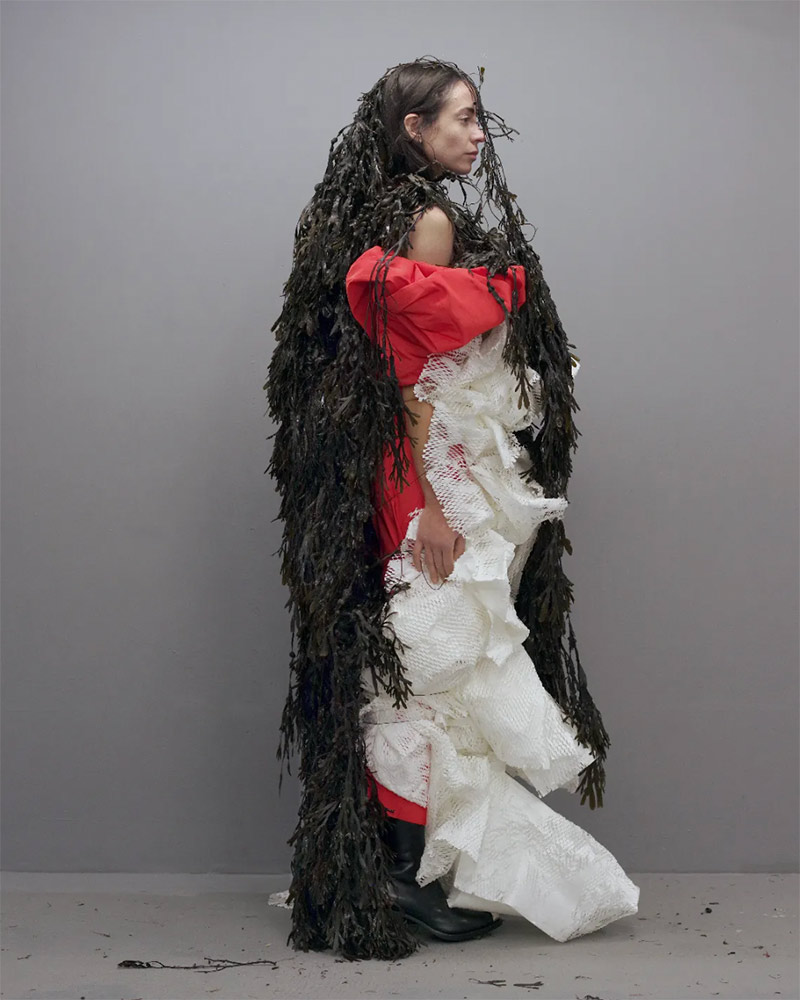
11 / 12
Jackie Nickerson
“Jackie’s book Farm has been a continual source of inspiration in the studio. In her final piece she’s created this incredible creature that feels so at one with nature. She completely transformed the dress – it feels so McQueen in the way she’s created her work, like a show piece from a past collection.”
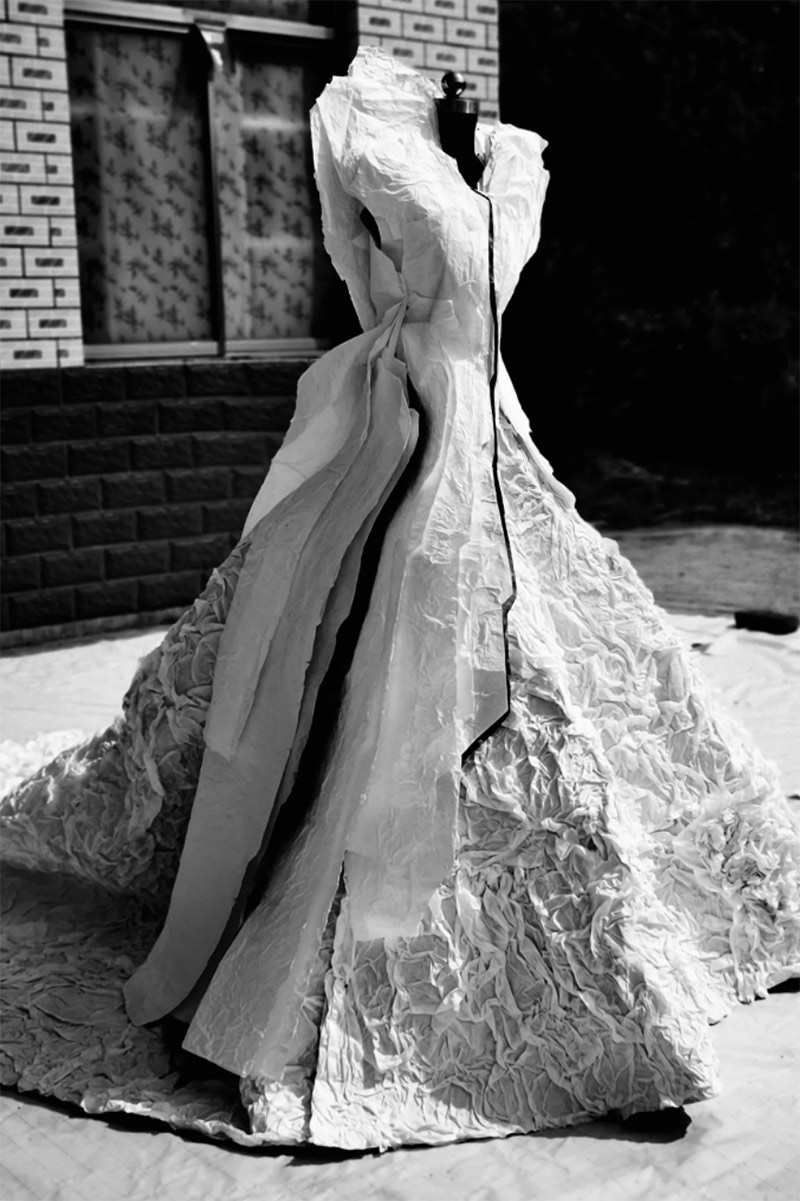
12 / 12
Bingyi
“Finally, the romance of Bingyi’s work, the idea of a dress being a waterfall that flows from a bride’s body, is extraordinary: again, expressing the importance of nature and the fact that we are part of it and something bigger than ourselves.”
This story was originally published on British Vogue.




